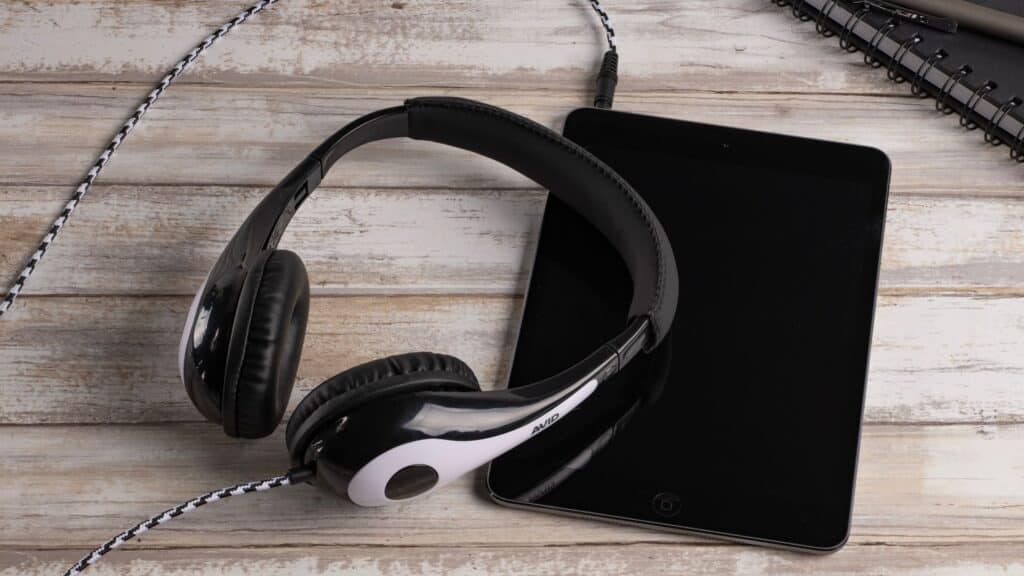As an audio solution developer, providing connection is never far from our minds. Connection when it comes to listening and communicating with quality audio, as well as the headphone connections at the end of their audio cables that link you to your device.
Of course, different types of audio connections may be something you’re already somewhat familiar such as when you’re searching for accessories for a device. But is one connection truly better than another? In this article, we’ll explore the answers to these questions and more, plus we’ll help define the common headphone connections so you may make an informed decision when shopping for new gear.
Let’s get connected
In today’s market, there are two main types of audio device connections: analog and digital. Analog is the most common type of connection since it has been around longer, however many listeners find digital connections more reliable, among other benefits and they are becoming much more available.
Analog headphone connections
Most headphones are analog which means that they transmit sound through electrical signals that get converted into sound waves. Analog headphones can be connected to devices like smartphones or computers using a 3.5mm headphone jack, which is the same kind of connection used by most speakers.
Digital headphone connections
Digital headphones typically use USB connectors instead of the standard 3.5 mm jack to receive audio signals from devices like computers or tablets. Digital headphones produce higher-quality sound because they’re not converting an electrical signal back into sound waves. Instead, they’re receiving an electronic copy of the original recording made in its purest form.
Without any extra processing required by your computer or tablet first before sending it back out again through your ears, this means they’re more accurate than analog headphones at reproducing sound. Digital headphones are typically used in professional applications like recording studios or live events where accuracy is paramount.

Common headphone connections
Now that we’ve discussed the two main types of headphone connections, let’s look at the different kinds of each. If you’re an audio listener, you’ve probably heard of 3.5mm pin or USB connectors and you may even have some headphones that use these connection types. But do you know what the different types are? We offer a quick explanation of each to get you in the know.
3.5mm connections
TRS stands for Tip, Ring, Sleeve and is identified by the two lines around the audio jack. This single-ended connection uses three conductors—left, right, plus ground—to transmit audio signals from one device to another.
This makes this connection work for both mono and stereo audio listening and it’s very common to find this type of connector on headphones which can be used with mobile phones or other devices that use a 3.5 mm jack for audio output.
Check out AVID’s popular headphones with TRS connections, the AE-35 and AE-54.
TRRS stands for Tip, Ring, Ring, Sleeve and has three lines around the pin. TRRS has a balanced connection that uses four conductors—left, right, ground, plus microphone—to transmit audio signals from one device to another. Typically, this type of connector is found on headsets and other devices that require complex communication over standard headphone jacks.
Learn more about AVID’s award-winning headsets with TRRS connections, the AE-25, AE-36, AE-55, and AE-75.
USB Connections
USB Type-A is a rectangular connector and the most familiar form of USB connection. It has been around since the nineties, and it’s still a very common type of port on computers and tablets today. USB type-A uses its own sound card, making it the most universal of the connection types and easy to pair with most devices, including computers and tablets.
This makes it easy to connect your USB headphones if you are using a new device or if you don’t know what kind of connection is available on the device you want to use. This type of connection also delivers
Check out AVID’s headset models with USB connections, the AE-39, AE-55, and AE-79.
USB Type-C is the newest, fastest, most versatile connection type and is becoming more common in our devices every day. If you have a smartphone or laptop with USB-C—or even if you’re using a USB-C charger to charge your phone—you can use this new type of connection to connect your headphones or headsets to your devices.
The main benefit of using USB-C for your headphones is that it allows for faster data transfer than traditional USB connections—up to 10Gbps. This means that when you use USB-C audio connections with high-quality headphones, they’ll be able to support higher sample rates and bit depths, which translates into better sound quality. Another benefit of the USB-C is that it’s reversible. No more thinking about which way the connector needs to face when plugging it in, unlike the original USB connector.
It’s no secret that USB-C is taking over the world, and it’s changing the way we connect our headphones and headsets. Stay tuned for more news from AVID surrounding your USB-C connection needs or contact us today with any questions.

What headphone connection is right for me?
Headphone and headset connections are something you may find yourself mulling over quite a bit if you’re the type that likes to research your audio solutions before purchasing them. What is the best type of connection? Well, it depends on what you need.
The choice of the connection type you will use for your audio device is one that not only can help it last longer but can also enhance the quality of your listening experience. Whether you’re using a headset or headphone, analog or digital, 3.5mm pin or USB, there are several different types of connections that all accomplish the same goal—transferring and receiving audio signals from one point to another. However, audio quality and compatibility are important factors to consider in your next audio solution purchase.
Click here to take a look at AVID’s current portfolio of product solutions and stay tuned for more news on our available connection types.
